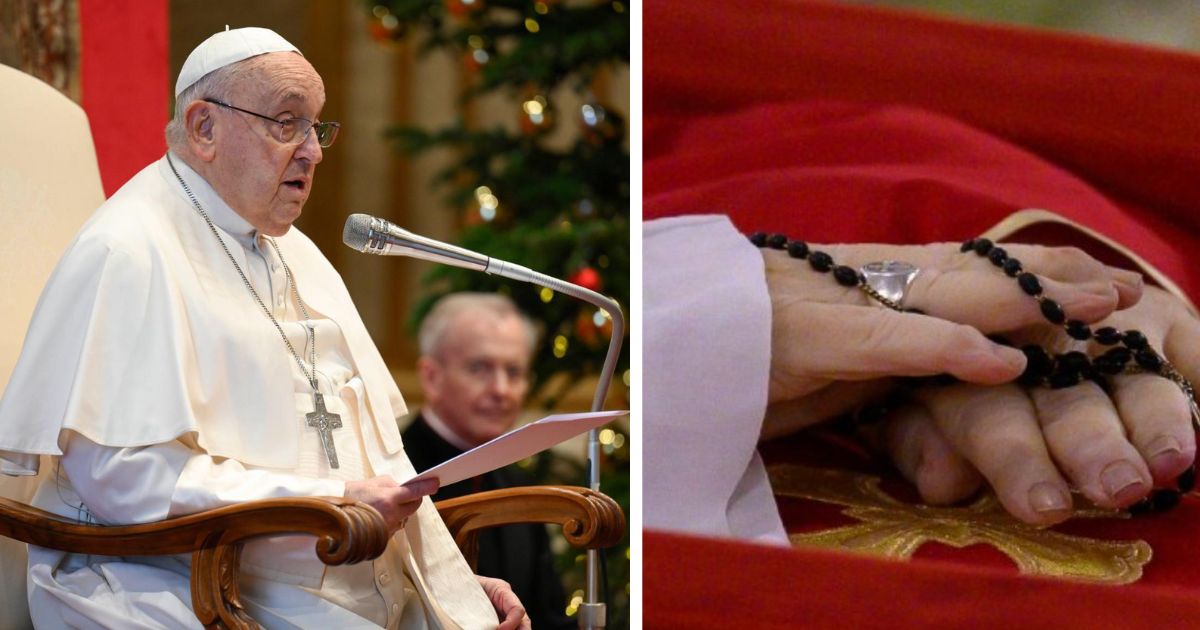With roots stretching back to at least the 13th century, the Fisherman’s Ring stands as one of the most iconic pieces of papal regalia.
Named after Saint Peter — a fisherman by trade and, according to Catholic tradition, the first pope — the ring has symbolized papal authority for centuries. Throughout his 12-year reign, Pope Francis wore the ring at ceremonial events, where it was kissed by countless followers and even became the center of a hygiene controversy.
Following tradition, the late pontiff’s signet ring will now be defaced within the Vatican walls after his death at age 88 on Easter Monday — a symbolic yet practical ritual with deep historical roots.
Why the Ring Must Be Destroyed
Historically, the Fisherman’s Ring, along with a pendant known as the bulla, served as an official seal for papal documents and briefs.
Each new pope received a newly crafted ring and bulla, and upon their death, both were destroyed to prevent any forgery of official decrees. From 1521 up to 2013, this involved literally smashing them with a hammer.
“It’s the equivalent of taking the login details away from a social media account,” explained CNN’s Vatican correspondent Christopher Lamb. “It was about preventing pretenders from using false seals.”
Traditionally, this duty falls to the Camerlengo of the Holy Roman Church — a senior cardinal tasked with overseeing the transition between popes. After formally announcing the pope’s death, the Camerlengo would destroy the ring in front of the College of Cardinals.
Even after the ring and bulla stopped serving their practical purpose (they were replaced by a stamp in the 19th century), the ceremonial destruction continued.
However, a slight shift occurred in 2013 when Pope Benedict XVI became the first pope to resign in nearly 600 years. Instead of destroying the ring, a deep cross was carved into its surface.
“There was a feeling that it was unnecessary to destroy it completely,” Lamb noted, suggesting that concerns over papal forgery had become less relevant over time.
Following the same precedent, current Camerlengo Kevin Joseph Farrell — appointed by Pope Francis in 2023 — is expected to deface, rather than destroy, the Fisherman’s Ring ahead of the next papal conclave.
A Symbol with Evolving Meaning
While the Fisherman’s Ring remains a powerful symbol, its use has varied greatly among recent popes. Pope Benedict XVI, for instance, wore his ring daily, whereas Pope John Paul II often chose a ring-shaped crucifix instead.
Pope Francis took a middle path. He wore the Fisherman’s Ring during official ceremonies but preferred a simple silver ring — from his time as a cardinal — for daily wear.
His more modest approach extended to interactions with the public as well. In 2019, Francis was seen withdrawing his hand as followers attempted to kiss the ring, sparking speculation about his discomfort with the practice. The Vatican later clarified that he simply wished to minimize the spread of germs.
“Francis liked to meet people where they were,” Lamb said, describing him as someone who preferred handshakes and embraces over formality.
A ‘Recycled’ Ring True to Francis’ Style
Throughout history, Fisherman’s Rings have varied in design, though they traditionally depict Saint Peter holding the keys to heaven. Popes often commissioned new rings to reflect the style or spirit of their era.
True to his humble image, however, Pope Francis broke from tradition. Rather than having a new ring made, he opted for a “recycled” piece — a ring originally belonging to Archbishop Pasquale Macchi, secretary to Pope Paul VI.
Crafted from gold-plated silver instead of pure gold, this “in-possession ring” aligned with Francis’ preference for simplicity and sustainability.





